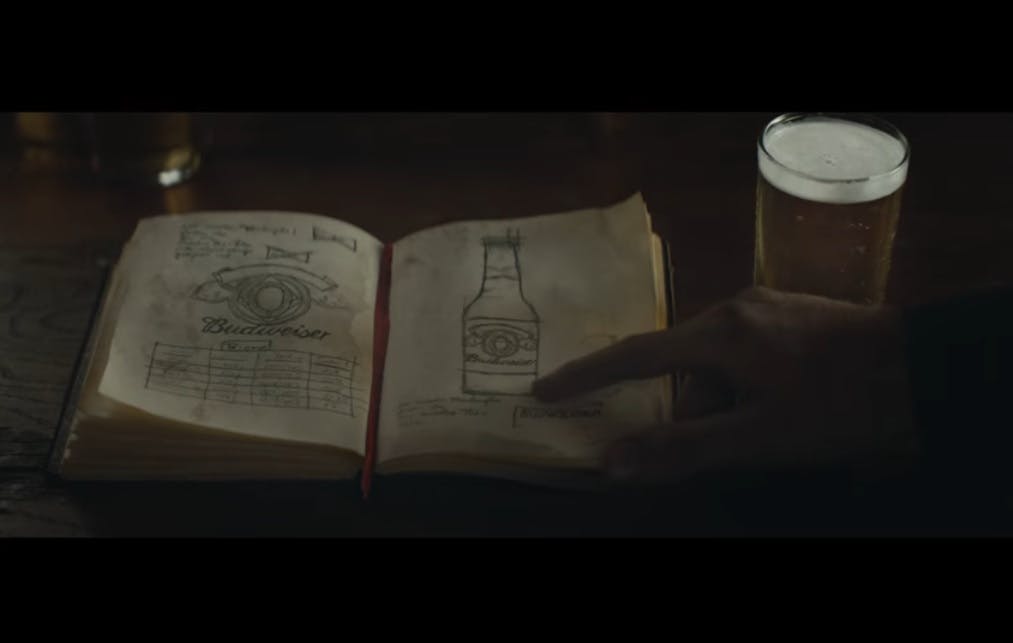I could not click to exit the You Tube ad to get to the music video.
I was spellbound.
“Man…I want to see this movie,” I thought, and looked forward to sending the link to a couple of friends who I also knew would be touched by this stirring story unfolding before my eyes. It was classic Joseph Campbell Hero’s Journey material.
The “movie trailer” turned out to be a Budweiser beer commercial.
I was delighted in that way I feel whenever I witness artistry in action, whether it’s a line from a Jason Isbell song, the preternatural grace and agility demonstrated by a running back eluding multiple would-be tacklers, or a phrase from Geoffrey Colvin’s column in Fortune I read over 15 years ago, where he described underperforming CEOs as being “shoved aside like a tepid latte.”
[clickToTweet tweet=”The Budweiser commercial is a perfect example of how to tell an “origin story” that connects at an emotional level.” quote=”The Budweiser commercial is a perfect example of how to tell an “origin story” that connects at an emotional level.”]
Note: The ad also contributed to the national debate over Trump’s immigration ban and spawned a #BoycottBudweiser Twitter campaign.
Origin stories are used by marketers to help people feel an emotional connection to the brand. Since much of my work focuses on the use of storytelling in employer branding and onboarding, I want to use the Budweiser commercial as an example of why you want to tell stories about who your organization is, how you came to be, and the good you do in the world. These messages, communicated in the emotionally evocative way only stories can do, help you attract talent and keep them motivated.
Here’s the video, which tells the origin story of Anheuser Busch in one minute.
Your origin story tells how and why your organization came into being. It helps the talent you want to attract begin the process of feeling an emotional connection to your organization. By understanding your raison d’etre — why your organization exists, the problem it was created to solve, and the good that it does in the world — talented job seekers are able to understand at a deeper, more visceral level what makes you worthy as an employer.
Your origin story tells the story of the challenges your founders and their fledgling company have faced and overcome. This too, fosters an emotional connection to your organization at a depth competitors, who simply spout platitudes and talking points about them being a “great place to work,” can’t reach.
Another great example of a compelling origin story comes from another player in the beer industry: Steam Whistle Brewing, located in Toronto, Canada.
The idea for Steam Whistle sprang from the ashes of a once successful brewery run by a beloved leader that had been purchased by a larger company and sold off for its assets. The former owner, who would bring employees on an annual canoe trip, decided to resurrect this ritual a year after the company’s demise. On the first night of the canoe trip, a handful of former employees stayed up until the wee hours swapping stories and dreams. At around 4 a.m., co-founder Greg Taylor and two other former managers, Cam Heaps, and Greg Cromwell decided they wanted to try to recreate the great brewery with the great culture that their mentor had done, and came upon the name The Three Fired Guys Brewery.
“It was a phoenix rising from the ashes kind of thing,” notes Taylor.
When they sobered up, they still thought it was a great idea and started meeting regularly to map out a strategy to make their dream a reality. On the strength of their quirky, defiant company name, they secured a one million dollar bank loan and moved into an historic building near Toronto’s financial district. They later changed their name to Steam Whistle, to capture the iconic feeling of release, relief, and celebration that comes after ending a hard day of work and getting the chance to “kick back” with a beer.
From that conversation around a campfire years ago, Steam Whistle has become the most successful independent craft brewer in Canada.
Imagine hearing this story at a job fair or in an interview, and then again in your new hire orientation program. Wouldn’t it make the idea of working at Steam Whistle more compelling, more romantic? It might make you feel like working there would make you a maverick.
That’s another reason for telling your origin story. They are like those iconic J. Peterman catalog descriptions that can take an ordinary navy blue blazer and turn it into a garment that will induct you into a secret society of debonair, worldly, sophisticated players.
Just like what the J. Peterman catalog stories do for their products, your origin story adds “romance” to your employer brand. They make it more fascinating and desirable.
Your origin story is just one story genre you want in your employer branding repertoire. You also want the following genres:
- “The difference we make in the world” stories
- “Employees matter” | “You can make a difference here” stories
- “Here’s how we roll” | “What it’s like working here” stories
- “You can be proud to work here” stories
- Cultural values-in-action stories
These stories will be described in a future article, but for now, let this Super Bowl commercial show you the power of telling your origin story, and make sure you are using yours in all aspects of the talent acquisition and management process, especially your employer brand.
